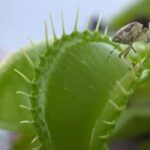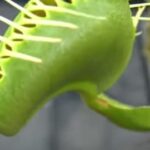As an Amazon Associate, this site earns commissions from qualifying purchases. For more details, click here.
The Venus flytrap (Dionaea muscipula) is one of the most fascinating plants in the natural world, known for its unique ability to capture and digest insects. Native to a small region in the southeastern United States, primarily in North and South Carolina, the Venus flytrap has captivated the curiosity of botanists, scientists, and nature enthusiasts for centuries. But who was the first person to discover and document this remarkable carnivorous plant?
Early Encounters with the Venus Flytrap
The first known European encounter with the Venus flytrap dates back to the mid-18th century. Native Americans in the Carolinas were already familiar with the plant, but it was a colonial governor named Arthur Dobbs who provided the first known written account of the plant in 1759. Dobbs was the Royal Governor of North Carolina from 1754 to 1765 and had a deep interest in botany.
In a letter written to a botanist friend in England, Dobbs described a plant with leaves that would close upon contact, effectively trapping small insects. His fascination with the plant was clear, but it was not yet formally named or classified.
John Ellis and the Formal Naming of the Venus Flytrap
In 1768, an English naturalist named John Ellis played a critical role in bringing the Venus flytrap to the attention of the scientific community. Ellis received a sample of the plant from North Carolina and was utterly captivated by its carnivorous nature. He wrote a detailed letter to the famous Swedish botanist Carl Linnaeus, who was responsible for the modern system of naming organisms (binomial nomenclature).
Ellis provided an in-depth description of the Venus flytrap’s unique trapping mechanism and proposed the scientific name Dionaea muscipula. The genus Dionaea was inspired by the Greek goddess Dione, the mother of Aphrodite (Venus), in reference to the plant’s alluring but deadly nature. The species name muscipula is Latin for “mousetrap,” highlighting the plant’s trapping ability.
In 1769, Linnaeus officially recognized and classified the Venus flytrap under the name Dionaea muscipula, and from that moment, it gained international attention.
Why Was It Named After Venus?
John Ellis chose the name Dionaea in reference to Venus, the Roman goddess of love, due to the plant’s captivating beauty. However, the addition of muscipula (mousetrap) highlighted the paradox of its deadly nature. This combination of beauty and death made the plant symbolically connected to the goddess Venus, who was both enchanting and formidable.
Legacy of the Discovery
The discovery of the Venus flytrap sparked widespread interest in carnivorous plants and inspired scientists to study plant movement and predatory behavior. Charles Darwin, for example, was fascinated by carnivorous plants and conducted detailed experiments on their mechanisms, including the Venus flytrap.
Today, the Venus flytrap remains a popular and iconic plant, both in horticulture and scientific research. It also serves as a powerful reminder of the wonders of evolution and nature’s adaptability. Without the early documentation by Arthur Dobbs and the scientific classification by John Ellis, the Venus flytrap might not have received the attention and recognition it has today.

My fascination with carnivorous plants began many, many years ago with Venus Fly Traps. Now I am more than happy to impart what I know with other enthusiasts and those who are curious about meat eating plants.


